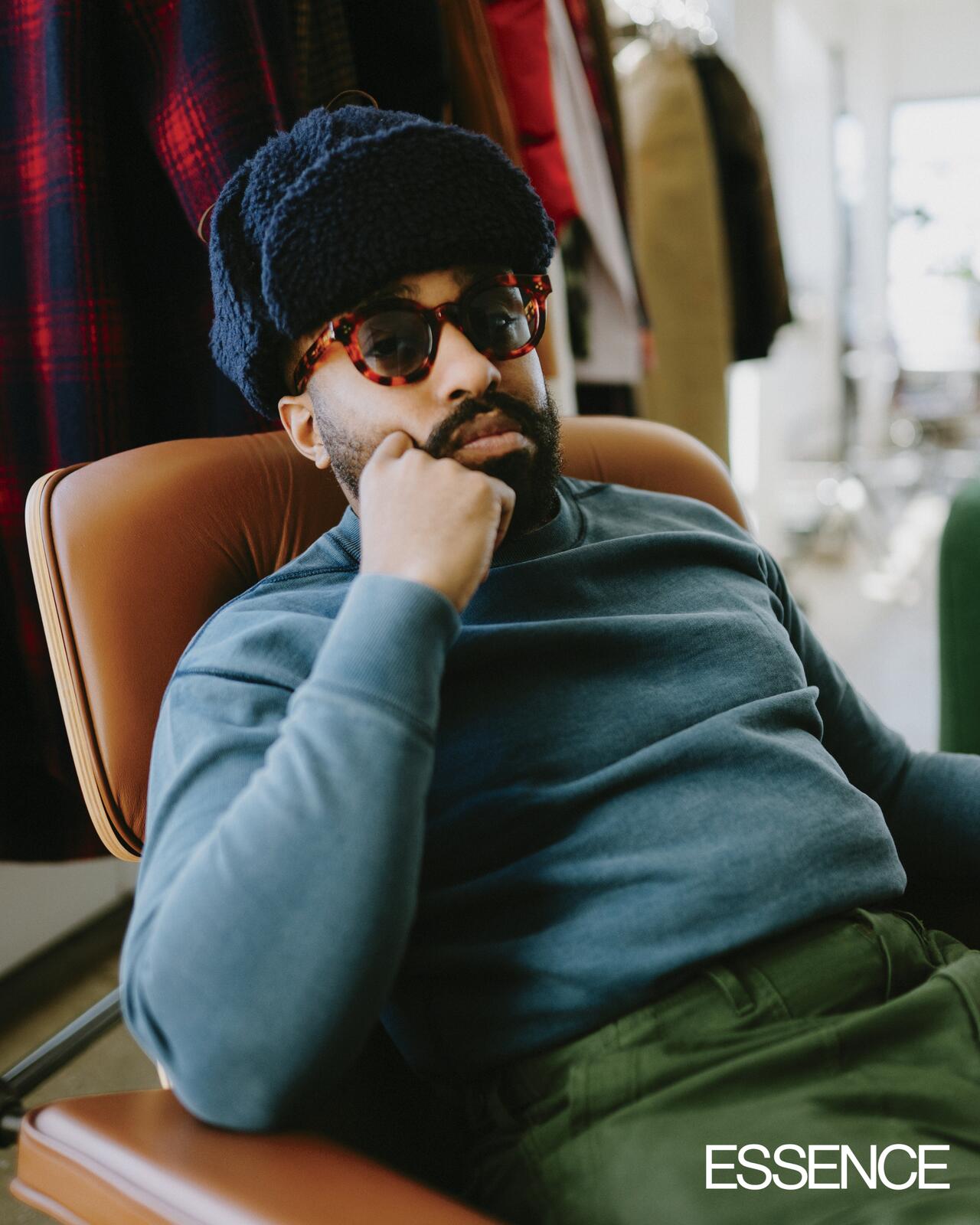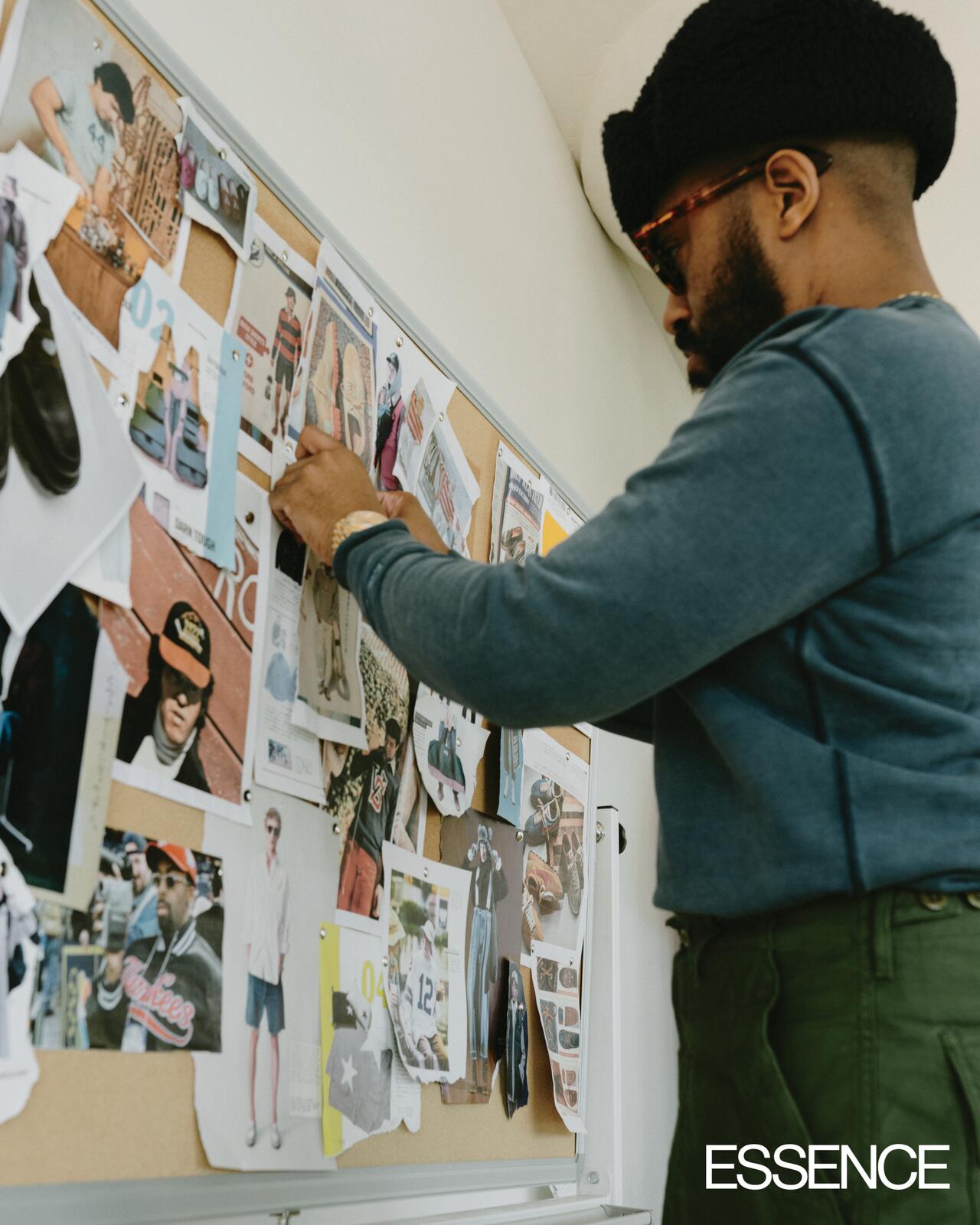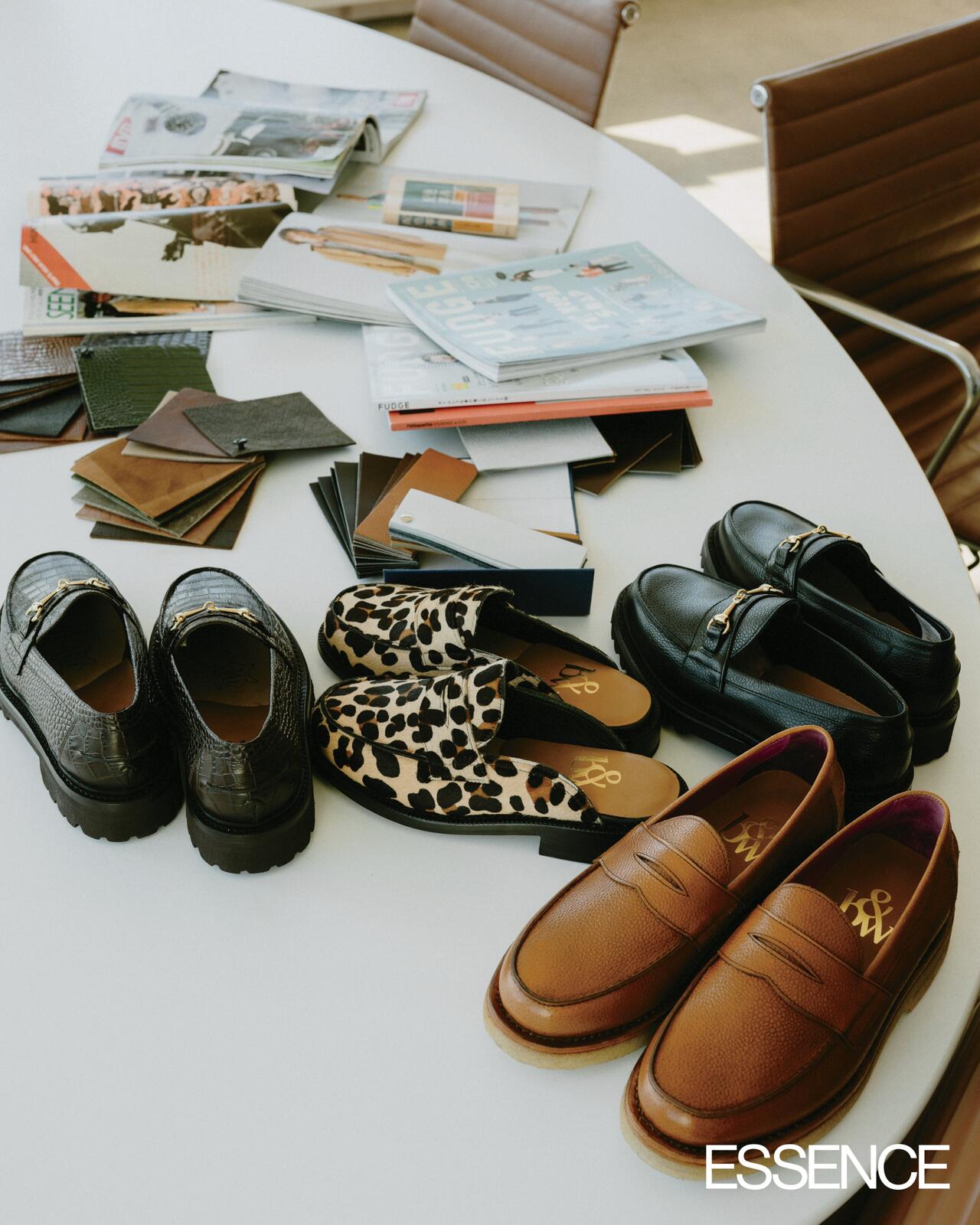
This story is featured in the May/June 2024 issue of ESSENCE.
Days before the start of New York Fashion Week, I am set to interview Chris Echevarria, founder and creative director of the Brooklyn-based fashion and lifestyle brand Blackstock & Weber. Equipped with my list of questions and some background research on the label, I hurry home from the subway, prepared to dive into our hour-long video conversation. However, our exchange evolves into more than a quest for answers to the right questions. It becomes a candid discussion about channeling nostalgia to feel grounded in the present, and how navigating the space between adversity and insight allows Echevarria to sit in his own power.
Born and raised in New Jersey, Echevarria, 36, has cared about fashion for as long as he can remember. “When I was young, I loved clothes,” he says. “My mother remembers that even at the age of 4, I would cry when she didn’t let me pick out my own clothes.” The child who had a keen eye for personal style was later voted Best Dressed in high school. The designer says he inherited his appreciation for quality clothing—and his taste—from his mother, who always liked nice things.

While his appreciation of clothing and patterns advanced through his adolescence and teenage years, he never envisioned a career as a fashion designer. Fashion was just something Echevarria enjoyed—an interest that was a constant in his life, from the friends he chose to how he spent his time and money. He’d skip classes and take the bus near his high school in New Jersey to SoHo in Manhattan to hang out at shops like APC, Bape, KidRobot, Billionaire Boys Club and Alife Rivington Club. He says it was a time when people weren’t trying so hard and were just doing what they liked. It was also the era of MTV’s TRL and BET’s 106 & Park, so Echevarria saw what it looked like aesthetically to be a superstar like Notorious B.I.G. or Mase.
“These are people I looked at as style icons,” he recalls. “Not just the clothes, but also the lifestyle they were living on TV through music videos was appealing to me, as a kid sharing a bedroom with my great-grandmother. At the time, I looked at them like, Oh, I can have that? That’s amazing.”
Young Echevarria knew that he wanted to be recognized for the work he did, and that he was pretty smart, so he went to college to be a doctor. After spending two semesters on premed prerequisites, he said, “F— this” and packed up his things to go home. While his family had concerns about his decision, Echevarria knew he’d figure it out—and began his journey toward becoming an American fashion designer. With med school no longer in the way of his true desires, he transferred to the Fashion Institute of Technology in New York City to study menswear design. During his time at F.I.T., he worked at J.Crew Liquor Store—the brand’s first men’s concept shop—and as a corporate scout for their third-party partnerships.
Following his career at J.Crew, Echevarria became an agent for European companies that wanted a presence in America; this led him to join in the relaunch of Stone Island menswear from 2014 to 2019. His experience as an avid shopper, hanging out and working in clothing stores helped him learn what drives the market in different parts of the world. Visiting store after store, he studied the difference between more traditional American brands and contemporary streetwear lines.
Echevarria noticed that modern brands catering to a younger demographic knew how to communicate with customers through Instagram content, attention-grabbing copy and constant engagement. The more traditional brands, set in the antiquated ways in which they’d operated for decades, didn’t know how to speak to this new generation. Picking up on this allowed Echevarria to identify a gap that needed to be filled. Heavy into sneakers himself, he knew that the peak sneaker moment he was seeing during that time would swing to the other side—classic shoes—at some point.

“I said to myself: I have this traditional sort of premium product, and it’s well-made and not skimped on—but then I have this other side that can communicate well with the younger consumer, and they create buzz and excitement over new products, new colorways,” Echevarria says. “They talk about these things at an increased cadence, because they’re engaging with new things every week. And I just put the two sides together. That’s what Blackstock & Weber became.”
Named for the two streets the designer grew up on in New Jersey—Blackstock Road and Weber Road—the line launched in 2017, with the loafer as its core product. To make the best loafer in the world, Echevarria’s strategy was to communicate with new consumers by releasing a loafer in a new colorway every week. He saw this as a different way for the consumer to interact with classic American design staples. By owning one product, Blackstock & Weber has become a popular name in the loafer game—leading to Echevarria’s appointment as creative director for Sperry by Chris Echevarria, a limited edition capsule collection of the brand’s iconic Captain’s oxford and original boat shoe, at the shoe company Sperry in September of 2023.
Yet amid his own brand’s success and the beauty of its creations, Echevarria has confronted daily challenges as a designer and entrepreneur. When asked what trials he’s faced and how he has overcome them, he warns that I might not like his answer.
“There’s a challenge every day,” he says. “I think that the biggest challenge was understanding that there were challenges every day, and being able to move through those challenges gracefully. Doing that work, and taking the world at face value—not taking an inconvenience as ‘Somebody’s out to get me,’ or ‘The universe doesn’t want me to succeed,’ or bringing negativity into my own life as a result of my feelings—was the biggest hurdle and the biggest work I had to do. And it was the most important work.”

It’s an honest, relatable and valuable answer. Echevarria now accepts that as we continue to grow in our work and personal lives, there will always be challenges. The true unlocking of our superpowers comes when we learn how to transform our mindset and to release unhealthy ways we’ve seen obstacles handled.
“It’s powerful,” says Echevarria. “When you realize that you get to sit in your own power, in ways that you could have never imagined, the shift that happens. When this happens, everybody notices. The way to get to your power is by working through things that you may feel are weaknesses. That is when you understand who you are.”
Reflecting on his journey, we consider the impact of his creative vision on both the fashion landscape and the human spirit. His story serves as an inspiration; a beacon illuminating the path for others to follow as they embrace their unique identity and pursue their passions with unwavering conviction. His ability to move to the beat of his own drum and stand firmly on his vision sets him apart, offering an influential example of resilience and determination in an industry often constrained by labels and expectations.
As we wrap the interview, I can’t help but feel grateful for the opportunity to revisit the enduring lessons Echevarria had learned. In a world bogged down with conformity, Echevarria reminds us of the beauty found in authenticity and self-acceptance.







